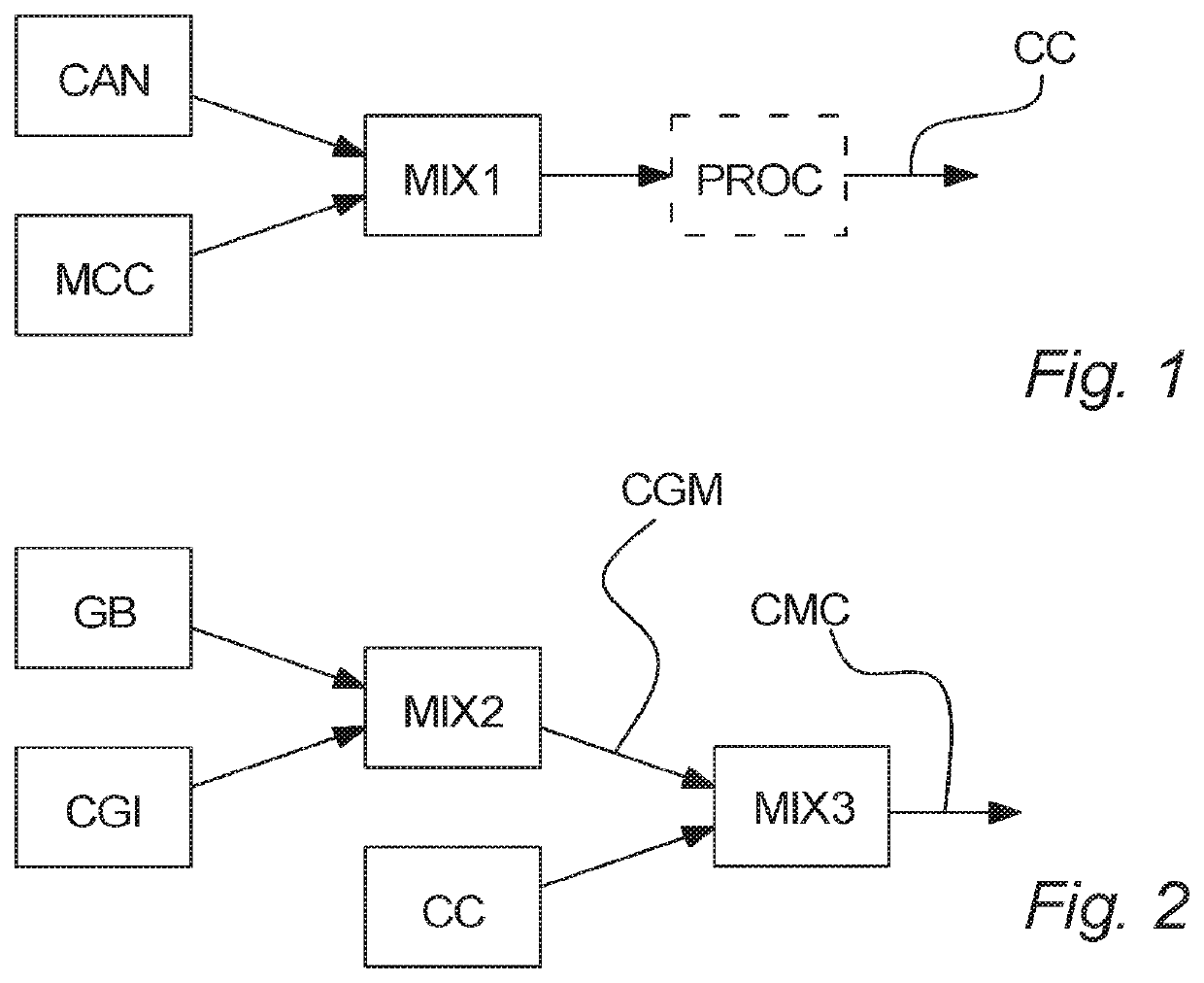Medical chewing gum comprising cannabinoid
a cannabinoid and chewing gum technology, applied in the field of chewing gum, can solve the problems of side effects, rapid absorption into the blood via the lung, and very often limited treatment, and achieve the effects of improving taste masking, improving release profile, and improving taste masking ingredients
- Summary
- Abstract
- Description
- Claims
- Application Information
AI Technical Summary
Benefits of technology
Problems solved by technology
Method used
Image
Examples
example 1
[0223]Preparation of Cannabinoid Premix
[0224]A cannabinoid-microcrystalline cellulose (MCC) premix is made by first adding free cannabinoid to poloxamer F68 (PF) to obtain a 20% solution of cannabinoid in poloxamer F68. Butylated hydroxytoluene (BHT) is added (0.5%) to 50 grams of the cannabinoid-poloxamer F68 solid mix and added to 50 gram of microcrystalline cellulose provided as Avicel PH 102 from FMC Biopolymer. This is then mixed in a Kitchenaid mixer operated at about 30 RPM for about 30 minutes at room temperature. This mixture is equilibrated for about 30 minutes in a sealed container. Thereby, the cannabinoid-MCC mixture is obtained.
example 2
[0225]Preparation of Cannabinoid Premix
[0226]A cannabinoid-MCC premix is made by adding first adding free cannabinoid to propylene glycol (PG) to obtain a 10% solution of cannabinoid in propylene glycol. 0.5% of butylated hydroxytoluene (BHT) is added to 50 grams of the cannabinoid-propylene glycol solution and then added to 50 gram of sorbitol. The cannabinoid-propylene glycol solution and the sorbitol are then mixed in a Kitchenaid mixer operated at about 30 RPM for about 30 minutes at room temperature. Finally, the obtained mixture of the cannabinoid-propylene glycol solution and the sorbitol is equilibrated for about 30 minutes in a sealed container. Thereby, the cannabinoid-MCC mixture is obtained.
example 3
[0227]Composition of Gum Bases
[0228]Ten different gum bases (GB), given GB numbers 101-110, were prepared by the following process:
[0229]The polymers polyvinyl acetate (PVA), vinyl acetate-vinyl laurate copolymer (VA-VL), and optionally polyisobutylene (PIB) are mixed at 120° C. together with filler, here calcium carbonate or talc, in a mixer having horizontally placed Z-shaped arms for mixing.
[0230]When the polymers are softened, triacetin is added, followed by addition of emulsifier, wax and vegetable fat.
[0231]After a total mixing time of about 45-60 minutes, the mixture is discharged into a pan and allowed to cool to room temperature.
[0232]In case of example GB 108, comparative (comp.) example GB 109, and standard (Std.) gum base example GB 110, which include butyl rubber (BR), BR is added in the initial mixing step, and the mixing time is extended to a total of about 90-105 minutes.
[0233]In case of comparative (comp.) example GB 109, the natural resin is added before the additi...
PUM
| Property | Measurement | Unit |
|---|---|---|
| particle size | aaaaa | aaaaa |
| particle size | aaaaa | aaaaa |
| diameter | aaaaa | aaaaa |
Abstract
Description
Claims
Application Information
 Login to View More
Login to View More - R&D
- Intellectual Property
- Life Sciences
- Materials
- Tech Scout
- Unparalleled Data Quality
- Higher Quality Content
- 60% Fewer Hallucinations
Browse by: Latest US Patents, China's latest patents, Technical Efficacy Thesaurus, Application Domain, Technology Topic, Popular Technical Reports.
© 2025 PatSnap. All rights reserved.Legal|Privacy policy|Modern Slavery Act Transparency Statement|Sitemap|About US| Contact US: help@patsnap.com

